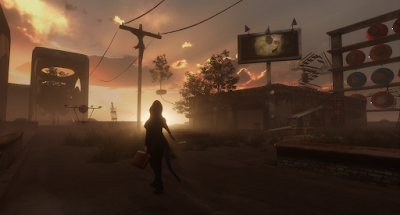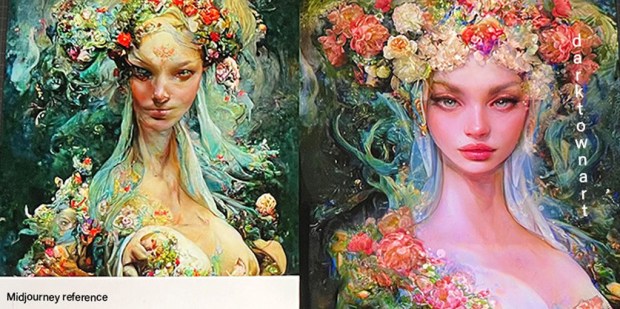An interview with Selavy Oh
Selavy Oh
Previous interviews
Alpha Auer
Mikati Slade
Glyph Graves
Blotto Epsilon and Cutea Benelli
Nessuno Myoo
Selavy Oh: This would be a long list. So here you go, no specific order
for the names:
Selavy Oh: Which ones I’m proud of? I think the ones that were
challenges for me. Like the first big works using Second Life, I was unknown in
the community, a beginner with this medium, but still I succeeded and achieved
some works I can be, well, proud of.
Bryn Oh: Do you have a method when creating? If so how does it often
progress? For example do you sketch or
write out ideas first for weeks or do you perhaps just jump directly into the
project with little planning and adapt as you go?
location, the size limits, duration of the show, etc. I make notes, sometimes I draw, or take pictures. I might look up something on the internet. All that is like loading a battery. And then I take a shower. Taking a shower is my method to unleash the hounds of creativity. Very often though one shower isn’t enough.
 Selavy Oh: Yes, there is indeed such a theme. But I don’t disclose it.
It is important as a guideline for me to create, but not for the reception of
my work. An artist should not give the interpretation of the work - except if
the interpretation is part of the work.
Selavy Oh: Yes, there is indeed such a theme. But I don’t disclose it.
It is important as a guideline for me to create, but not for the reception of
my work. An artist should not give the interpretation of the work - except if
the interpretation is part of the work.
 Selavy Oh: I don’t like the term "virtual art" at all. It’s a
misnomer. What we create is real art. Our material is mostly virtual or
immaterial. And that’s already a defining term: you can’t touch it with your
bare hands.
Selavy Oh: I don’t like the term "virtual art" at all. It’s a
misnomer. What we create is real art. Our material is mostly virtual or
immaterial. And that’s already a defining term: you can’t touch it with your
bare hands.
Thus, Duchamp liberated art by allowing it to be
created outside academic or other conventions. But at the same time he shifted
part of the contribution to the creative act from the artist to the spectator.
Because of this paradigmatic shift, my perspective is that Duchamp is
responsible for a lot of bad art.
Selavy Oh - Conformational Change from Ux Hax on Vimeo.
Previous interviews
Alpha Auer
Mikati Slade
Glyph Graves
Blotto Epsilon and Cutea Benelli
Nessuno Myoo
Bryn Oh: Where are you from?
And who are the most renowned artists from your country in your opinion?
Selavy Oh: Germany. Artists: Albrecht Dürer, Caspar David Friedrich,
Joseph Beuys, Gerhard Richter.
Bryn Oh: Often the average person outside SL is perplexed with virtual worlds in
general. When people unfamiliar with the
virtual ask you what you do how do you explain it?
Selavy Oh: I don’t explain. I offer them to demonstrate it.
Bryn Oh: Who are a few of your favorite artists and why?
 |
| Gerhard Richter |
Robert Morris. Bruce Nauman. Joseph Kosuth. Sol LeWitt.
Gregor Schneider. Pippilotti Rist. Alva Noto. Fiona Banner. Allan Kaprow. … and
of course Rrose Selavy
Bryn Oh: Whose artwork do you personally dislike the most and why?
Selavy Oh: The late Salvador Dali. Because he started out as a very
promising artist (just look at his fabulous collaboration with Bunuel in 'un
chien andalou‘ and 'l’age d’or‘) and then quickly turned into kitsch.
Bryn Oh: Which of your own works are you most proud of? Do you feel any failed and if so do you now
know why?
 |
| Sol LeWitt |
The failures. Well, many have failed in one or the other
aspect. An example: I had two big installations at the LEA sims, one in DC
Spensley’s show and one for a show by Lori Landay. The work was called
"the rules“. I had put a lot of work into it, a lot of thinking, coding,
conceptual ideas. But it was pretty much a failure. The idea didn’t come
across. Too complex, the beauty of its inner logic was apparently not
accessible to the visitors, the installation seemed uncommunicative, demure.
For example, nobody noticed that both installations were connected. It’s in a
way ironical, because the topic of the piece was that we constantly try to
understand the rules governing the world around us, but even when they are
plain and simple, we have a really hard time to recognize them. But: I’m still
proud of this one, even though it was a failure.
 |
| Gregor Schneider |
Selavy Oh: First I do research. I try to get as much information as
possible about the topic, the
location, the size limits, duration of the show, etc. I make notes, sometimes I draw, or take pictures. I might look up something on the internet. All that is like loading a battery. And then I take a shower. Taking a shower is my method to unleash the hounds of creativity. Very often though one shower isn’t enough.
Bryn Oh: What are you currently reading, listening to or looking at
to inspire your work?
Selavy Oh: Some examples: reading a couple of philosophical articles
about time machines, a text by Roland Barthes, looking at an old exhibition
catalogue, watching the six hour long screening of Matthew Barney’s „The River
of Fundament“, talking to members of an artists research laboratory, email
conversations with a close friend. Trying to be open, like an antenna, open for
receiving those signals "from the labyrinth beyond time and space".
Bryn Oh: Does your work have an overall theme and if so what might
that be? If not please describe how you
tend to pick your topics.
 Selavy Oh: Yes, there is indeed such a theme. But I don’t disclose it.
It is important as a guideline for me to create, but not for the reception of
my work. An artist should not give the interpretation of the work - except if
the interpretation is part of the work.
Selavy Oh: Yes, there is indeed such a theme. But I don’t disclose it.
It is important as a guideline for me to create, but not for the reception of
my work. An artist should not give the interpretation of the work - except if
the interpretation is part of the work.
Bryn Oh: Have you ever had to deal with negative publicity or a
disappointing rejection of your artwork?
How do you deal with it?
Selavy Oh: Negative publicity fortunately has been quite rare for me.
But if my work is completely ignored, then that tells a lot. Of course, I had
several rejections of proposals for funding or to get into a show. That’s ok,
it’s part of the game. Perhaps I was lucky so far, perhaps I simply ignored
other disappointments.
Bryn Oh: Would you like to take a stab at explaining what defines
virtual art?
 Selavy Oh: I don’t like the term "virtual art" at all. It’s a
misnomer. What we create is real art. Our material is mostly virtual or
immaterial. And that’s already a defining term: you can’t touch it with your
bare hands.
Selavy Oh: I don’t like the term "virtual art" at all. It’s a
misnomer. What we create is real art. Our material is mostly virtual or
immaterial. And that’s already a defining term: you can’t touch it with your
bare hands.
Bryn Oh: What would you say makes virtual creations unique over other
art forms?
Selavy Oh: That you can touch it with your mouse. Joke aside, one
unique feature is the possibility for non-destructive interactivity. Even if
thousand visitors engage with our work there is no need for restoration. Of
course you can also say: the unique feature is that virtual things don’t age.
But that’s not completely true, they age differently. It’s not a continuous
process, but rather instantaneous: at some point, our work will be gone,
because the last piece of hardware to display it will have died.
 |
| Marcel Duchamp |
Bryn Oh: Centuries ago there was no such thing as an
"artist" just craftsmen, as time progressed superior technical ability
and creativity created the elite "Master" artist whose work stood
recognized above all others. In 1917
Marcel Duchamp submitted a work entitled "Fountain" to the Society of
Independent artists. He stated
"... He (the artist) CHOSE it. He took an article of life, placed it so
that its useful significance disappeared under the new title and point of view
– created a new thought for that object"
He wanted to shift the focus away from technical craft to more of an
aesthetic intellectual interpretation. Some say that because of him almost everything
is considered art today. From an
elephant painting with its trunk, a Banksy, a child's drawing to someone
vomiting paint onto a canvas. What is
your perspective on this?
Selavy Oh: Duchamp also said: "All in all, the creative act is not
performed by the artist alone; the spectator brings the work in contact with
the external world by deciphering and interpreting its inner qualification and
thus adds his contribution to the creative act."
This means that it is not enough to declare something as
being a work of art. The artist may intend to create an artwork, but may fail.
In Duchamp’s words: "What I have in mind is that art may be bad, good or
indifferent, but, whatever adjective is used, we must call it art, and bad art
is still art in the same way that a bad emotion is still an emotion."
Selavy Oh - Conformational Change from Ux Hax on Vimeo.





Comments